Still/Time
|
Mise-en-Scene
|
Camera
|
Sound
|
 3:01 - 3:10 3:01 - 3:10
|
Dark scene with typical household lighting as well as that through windows (seen at 3:03)
She’s about to deal with the steaming popcorn, but is distracted quickly by the phone ringing.
|
Medium-Long Shot.
Smooth track on steadicam/glidecam following character as they walk.
|
Sound of cracking popcorn (selective sound)
|
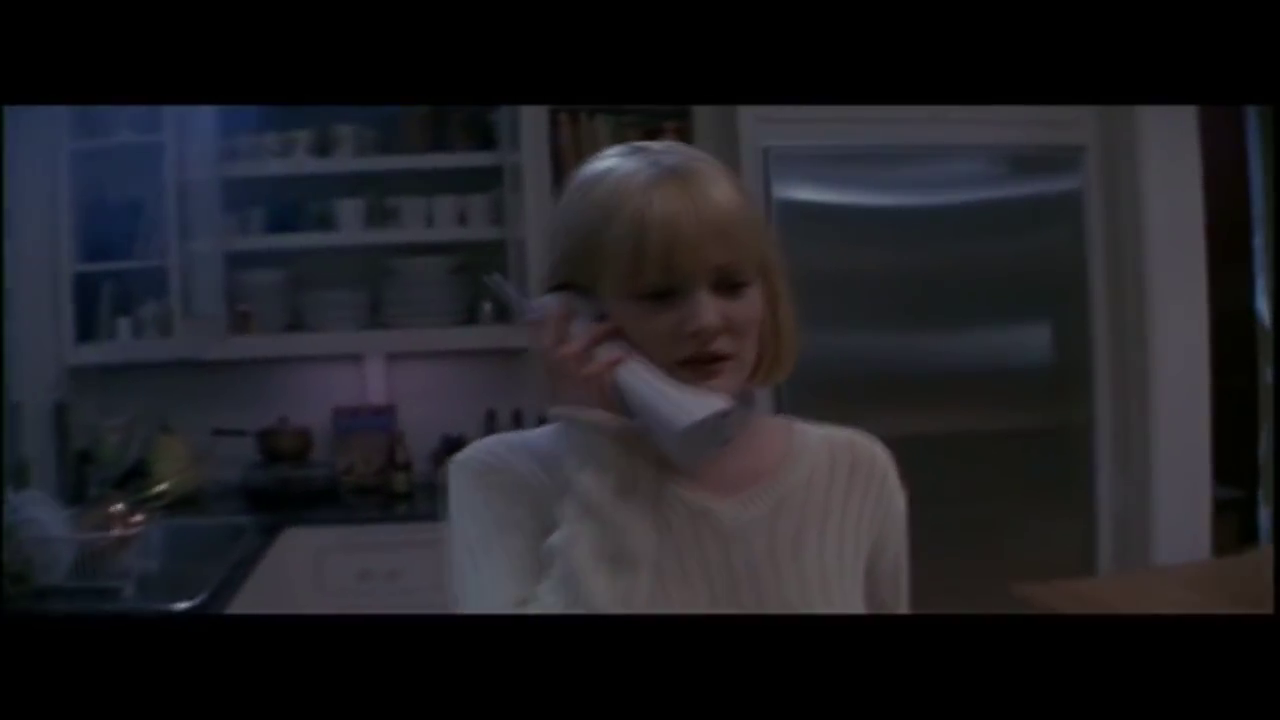 3:10 - 3:30 3:10 - 3:30
|
Woman standing in kitchen speaking on typical household phone (in 1996) with very little occurring around her.
Typical kitchen utensils and objects shown around her in the background, but not focused upon.
|
Close-Up Shot.
Pan in towards character’s face as they answer the phone.
Follows their slight swaying.
|
Dialogue between female character and the unknown character on the phone
Voice distortion on phone
Fizzling of popcorn on stove in the background
Gradual build up of music
|
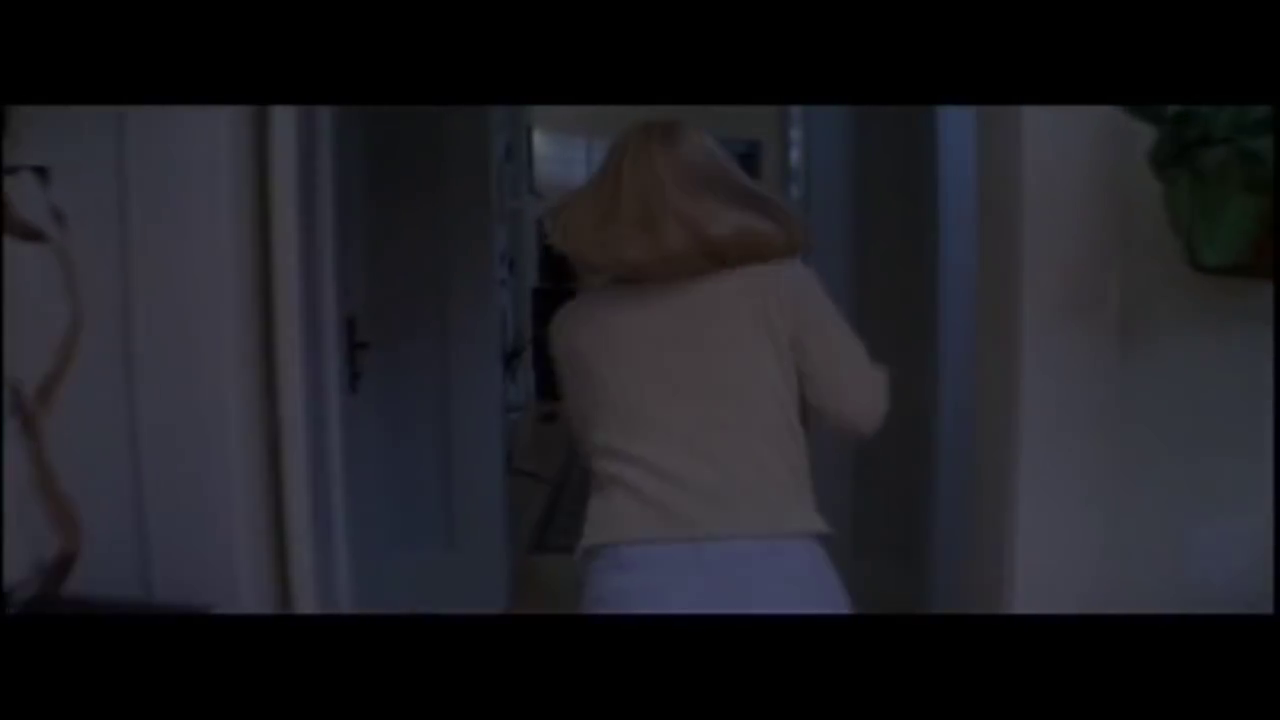 3:30 - 3:38 3:30 - 3:38
|
|
Long Shot
Less stabilized shot than beforehand reinforces the sense of panic in the scene.
Similar to a POV shot from behind the character, as if they’re being watched.
|
Sharp volume change in non-diegetic sound
Amplified diegetic sound of door handles/locks
|
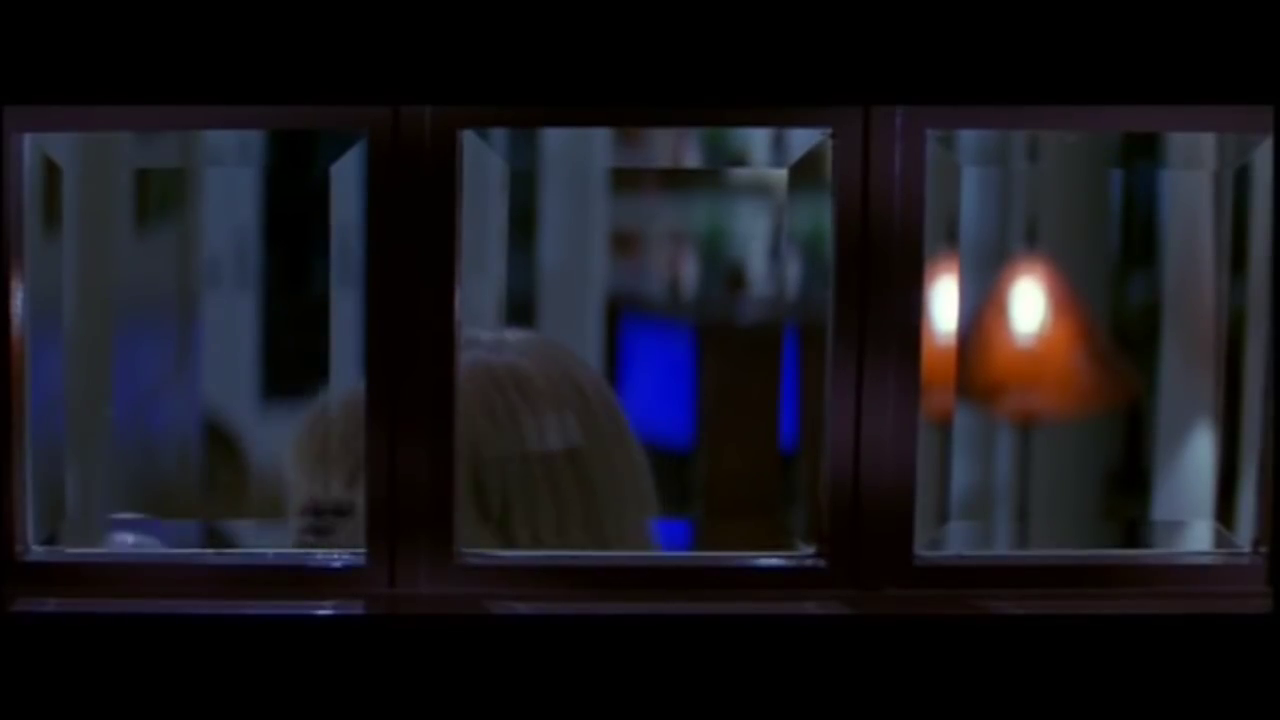 3:38 - 3:40 3:38 - 3:40
|
Three bars of window glass.
Could be similar to that of prison bars, and how she is imprisoned in her house.
|
Close-Up Shot.
Shows character through outside door windows at head level.
Background out of focus - narrow depth of field.
|
Non-diegetic sound fades into background.
Dialogue returns, alongside heavy breathing.
|
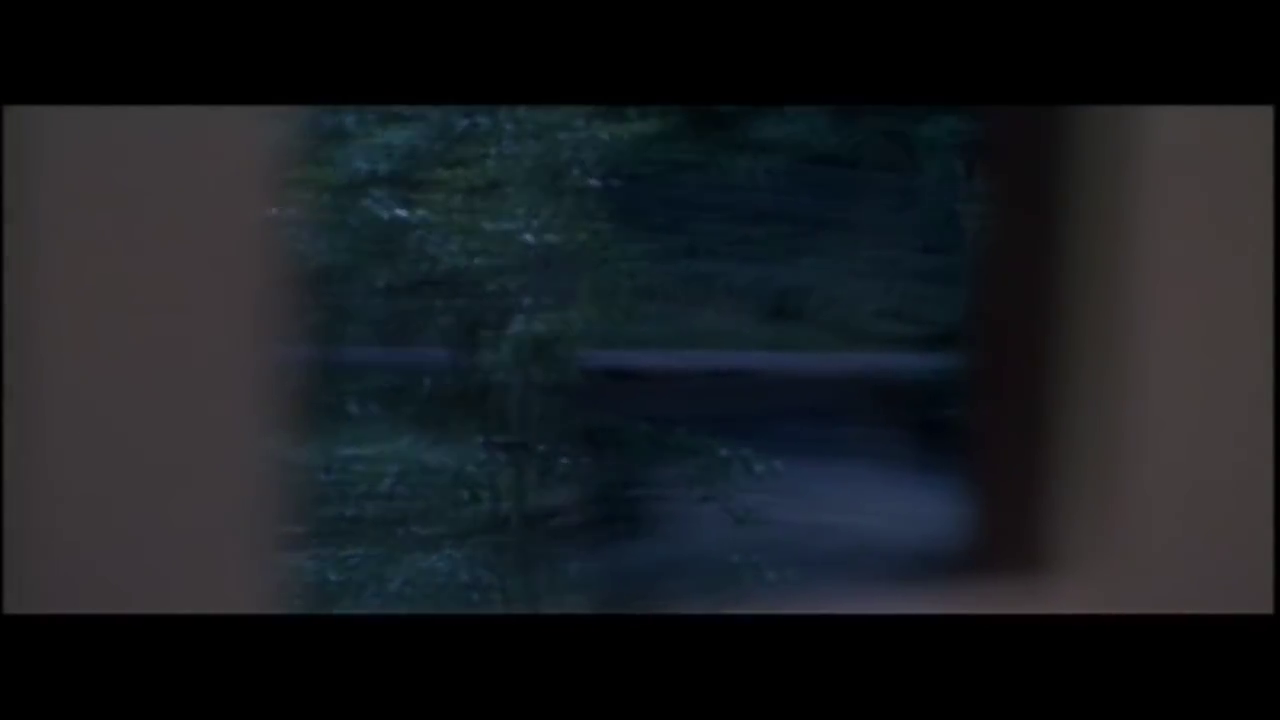 3:40 - 3:44 3:40 - 3:44
|
|
POV shot from her eye-line looking left and right out of the window panes.
|
Sound carried across from previous
|
 3:44 - 3:52 3:44 - 3:52
|
|
Repeat of previous shot, continuing to show her on the phone.
|
Sound carried across from previous
|
 3:52 - 4:04 3:52 - 4:04
|
Another shot of her on the phone facing the outer glass windows, with a faint light in the background.
She jumps in fear as the doorbell rings.
|
Medium-Shot of her on the phone, now looking out of the windows to the left of the door (in the previous shot).
|
Sudden ringing of doorbell and phones startle her and the audience.
Strings/Orchestral music peaks at the end of the dialogue.
|
 4:04 - 4:06 4:04 - 4:06
|
|
Static shot of door with no movement.
|
Doorbell rings again as we cut away from this shot.
|
 4:06 - 4:32 4:06 - 4:32
|
|
Long/Medium-Long Shot.
Panning in towards her into a Medium Shot.
|
Orchestral music peaks as the phone rings again.
Dialogue returns between the two characters.
|
 4:32 - 4:36 4:32 - 4:36
|
|
POV shot showing the same view as before (4:04-4:06) but from further away, with more movement.
Continuing with her walking away from the door.
|
Dialogue continued across this shot.
|
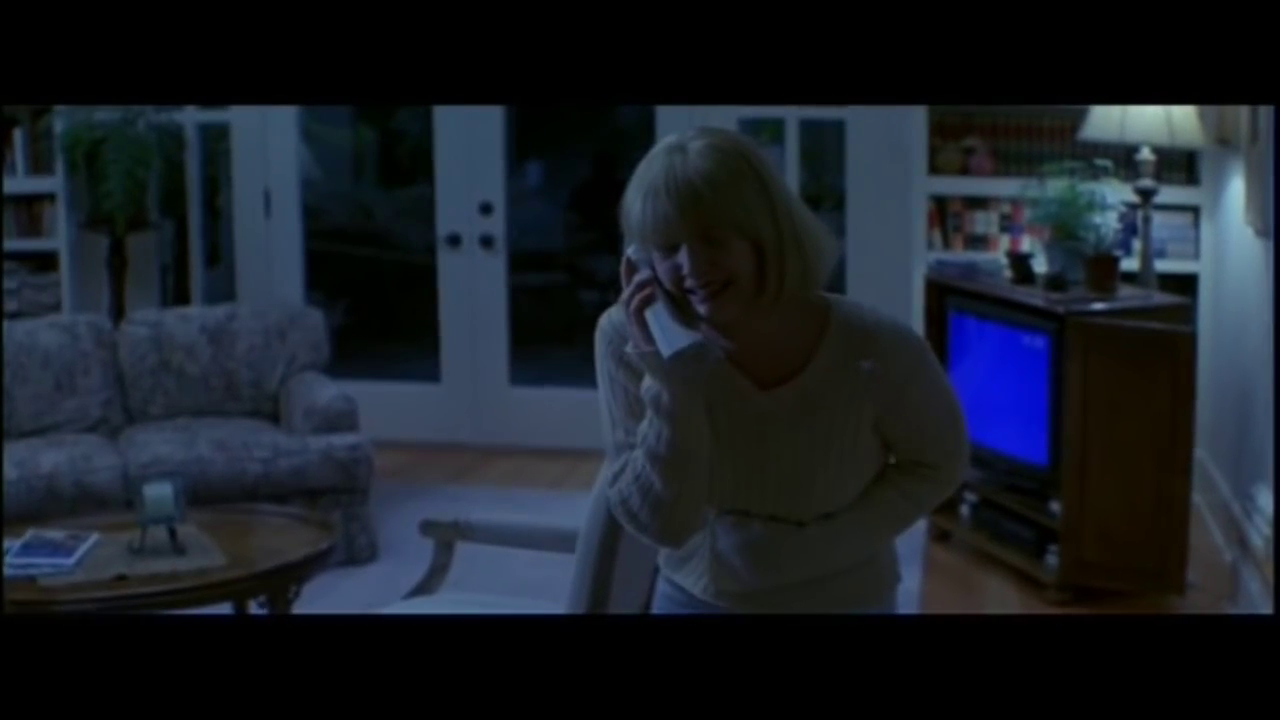  4:36 - 4:52 4:36 - 4:52
|
|
Stabilised shot following her towards the back of the room.
The camera is now swaying also, giving an uneasy feel to the scene.
|
Profanity used to exclaim her anger.
Non-diegetic sound gradually becoming more eerie, with a sudden end as he states her boyfriend’s name.
|
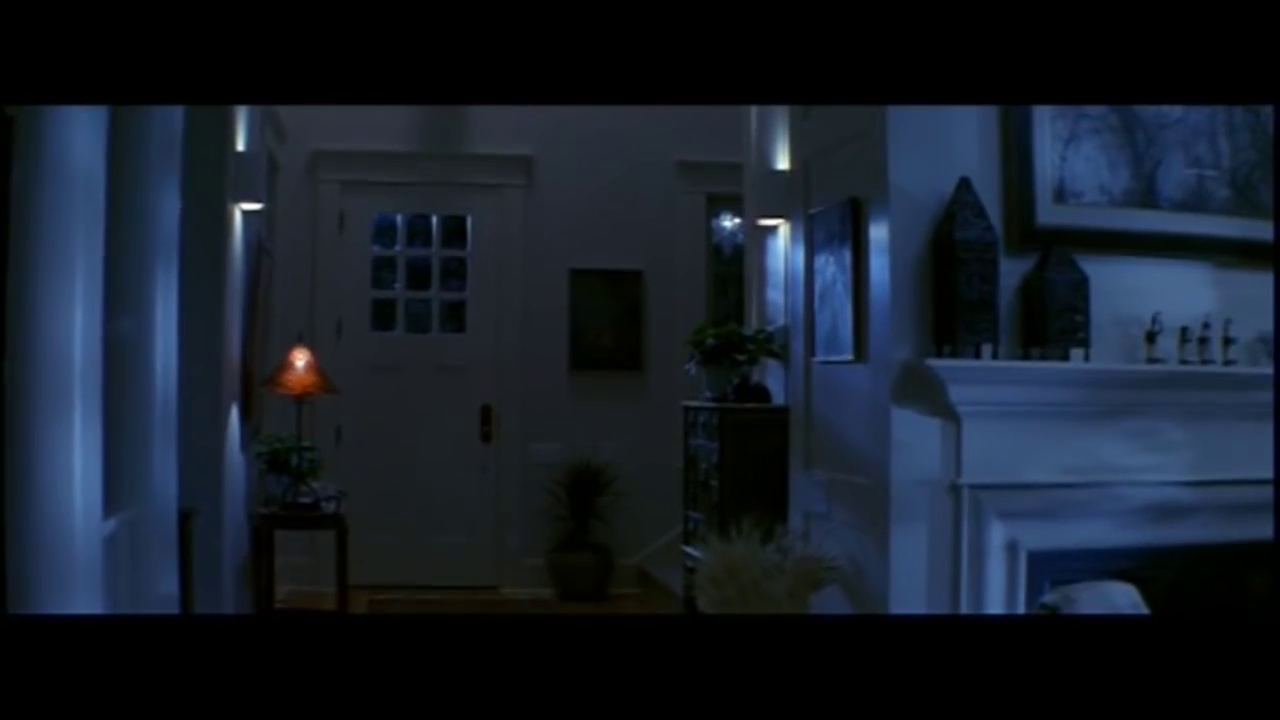 4:52 - 4:55 4:52 - 4:55
|
|
|
Continuation of previous shot.
|
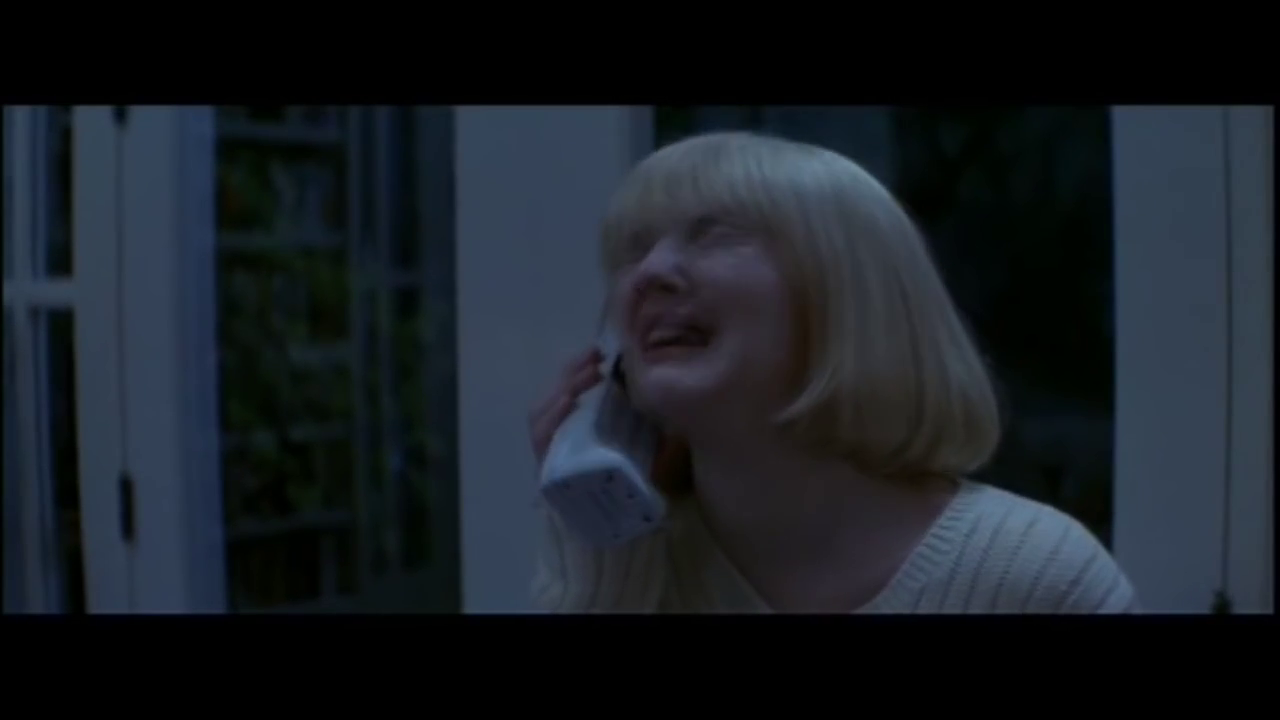 4:55 - 5:17 4:55 - 5:17
|
|
Continued following shot.
Close-Up shot on face, moving further out as she looks away from the camera.
|
Drums as dialogue stops and she turns towards the patio light switch.
|

0 comments:
Post a Comment